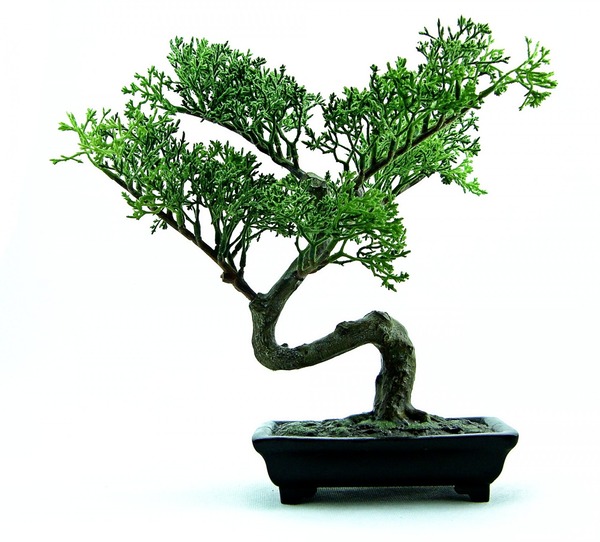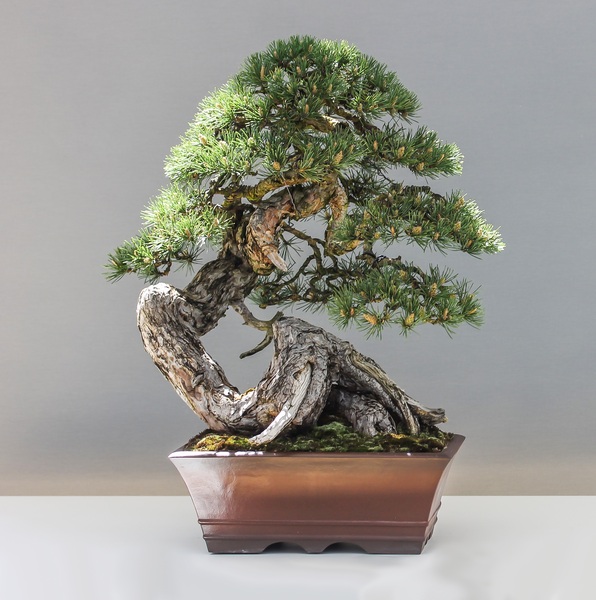
Bonsai Tree Care for Beginners
This article covers all you need to know about bonsai tree care for beginners. We look at this ancient hobby and introduce you to the essential information you need to get started with growing bonsai trees.
If you have always wanted to know where to start with bonsai trees, this guide covers the asic topics such as Bonsai Tree Placement, Watering Your Tree, Pruning and Shaping, Bonsai Tree Fertilizer and Bonsai Tree Soil.

Table of Contents
What is a Bonsai Tree?
A bonsai tree is a small shrub which is grown to resemble a full-sized tree. A bonsai tree is commonly grown in a shallow ceramic pot and maintained by techniques to keep the appearance of a miniature tree.
The bonsai art form is thousands of years old. The goal of bonsai tree horticulture is to recreate a miniature representation of real life trees from nature.
The term ‘Bon-sai’ originates from Japan and is translated as ‘planted in a container’. The art of cultivating a bonsai tree originates from ancient China and was redeveloped by Japanese Zen Buddhists.
Any plant species with a woody stem or trunk can be suitable for cultivating into a bonsai tree. Techniques such as pinching buds, wiring branches and pruning the tree are used to keep the bonsai under four feet high.
Bonsai Tree Care
A bonsai tree is a wonderful plant to display in the home or office. A bonsai tree does require a significant amount of care and attention, which may be intimidating for beginners.
However, by following a few simple tips on placement, watering, pruning and soil type, you can easily grow and care for your own bonsai tree.
Bonsai Tree Placement
Your bonsai tree placement is essential for keeping your tree healthy and happy. Your bonsai will require adequate sunlight and also need to be compatible with the surrounding environment.
Indoor and outdoor bonsai placement
Some bonsais are better suited to growing indoors, while some species do well indoors.
Many bonsai trees prefer outside living for the majority of the year. Growing outdoors offers many natural cycles that are healthy for bonsai growth, which can not be replicated indoors.
Temperate bonsai trees require a period of dormancy in the winter. This happens when the annual growth cycle ends, and the bonsai tree prepares for the next cycle.
Keeping a bonsai indoors will prevent it from becoming dormant and therefore not suitable conditions for temperate trees.
Which Bonsai is best for indoors?
Tropical and subtropical bonsai trees grow the best indoors. The most common bonsai suitable for indoor growing is the Ficus Bonsai.
Ficus Bonsai trees are great for beginners as they require little maintenance. They are able to tolerate low humidity and offer good resilience.
Other popular bonsai trees which grow well indoors include Schefflera (Hawaiian umbrella), Carmona (Fukien tea), Sageretia (Sweet plum ) and the Dwarf jade.
Providing sunlight for your bonsai
Bonsai trees thrive in lots of sunlight. If you are growing your bonsai outdoors, place it in a bright spot where it is exposed to lots of sunlight.
In particularly hot climates, however, your bonsai may require some mid-afternoon shade.
Keeping a bonsai tree indoors will require access to enough light or the plant will weaken. You will need to place your indoor bonsai in a south-facing window or under an artificial light source.
Watering Your Bonsai Tree
The most common cause of bonsai tree death is lack of water. Bonsai trees grow in a shallow layer of soil, which means that it can dry out quickly.
It is also important not to drown the bonsai roots. Too much water will prevent the roots access to oxygen which can result in shrivelled branches and yellow leaves.
Both under-watering and over watering your bonsai tree can be fatal. So it is important to get the amount of water correct.
Each bonsai tree will have a watering requirement individual to its circumstances. The factors which effect the amount of water required include:
- Bonsai Tree Species
- Climate
- Pot Type
- Seasonal Factors
This means that checking the moisture of the soil is a more accurate way to check if your tree needs water rather than scheduling a regular watering.
You can check the soil moisture by using one of the following methods:
Soil moisture meter:
To get an accurate measurement of whether our bonsai needs water, you can use a soil moisture meter. Simply insert the meter into the soil next to the root ball. With the moisture meter, you will get a number reading to indicate if the soil needs more water or not.
Using a chopstick:
You can also check the moisture of a plant using the chopstick method. Insert the chopstick one inch into the soil near the middle of the pot. Leave the chopstick for ten minutes, then check to see if it has turned brown and has soil attached to it. When the chopstick fails to turn brown, the bonsai tree needs more water.
Using a finger:
If you do not have a moisture meter, you can test the soil using your finger. Place our finger two inches into the soil and check how moist the soil feels. If it feels bone-dry to the touch, you should water the plant.

Pruning and Shaping Your Bonsai Tree
To keep your bonsai tree in the desired shape and size, you will need to prune the tree regularly.
Maintenance pruning and structural pruning are required skills for a bonsai tree owner. You will need to learn these two types of pruning methods to keep your bonsai tree healthy and in shape.
Maintenance pruning
Maintenance pruning encourages new growth in the bonsai, which strengthens the tree. The health of the tree is maintained by cutting away young shoots to expose the remaining leaves to sunlight and air.
Buds, branches and leaves that produce undesired shape to your bonsai tree should be pruned away to maintain the aesthetic of the tree.
By pruning the buds from branches, your plant will produce smaller, more compact leaf growth, which is the desired effect.
Structural pruning
Structural pruning is an advanced pruning technique which is applied while the tree is dormant. The tree’s primary branches are removed in such a way that it is able to recover.
A bonsai can also be grown to the desired shape by wiring the branches. Wire can be wrapped around the branches during winter to control the growth pattern of the branches.
Bonsai Tree Fertilizer
A healthy bonsai tree requires nutrient-rich soil to grow in. Soil naturally gains important nutrients as organic matter breaks down.
For plants growing in a more controlled environment, the nutrients will need to be monitored and improved by adding fertilizer.
For outdoor Bonsai, use a balanced nitrogen fertilizer over the growing season and decrease the amount applied towards the end of the growing season.
Liquid Fertilizer:
Liquid fertilizer is easy to measure and apply to your bonsai tree. Liquid fertilizer is a fast acting option, but it will be washed from the soil during watering.
Solid Fertilizer:
Solid fertilizer is diffused into the soil over time to add the nutrients required by the plant. However, solid fertilizer can be added in higher doses as it is hard to measure and risk burning the trees roots.
Bonsai Tree Soil
The soil that you use for growing your bonsai tree is essential. The right soil will help provide nutrients, water retention, oxygen permeation and drainage.
You can use the following ingredients in your bonsai tree soil for optimum results:
Compost
Compost helps with water retention, but also offers the plant the essential nutrients it requires.
Akadama
Mixing akadama into the soil helps with root absorption while letting water pass.
Pumice
Adding pumice to the soil helps with root support, aeration and holding moisture.
Red lava rock chips
Red lava rock chips prevents the soil from compacting whilst also lowering fertilizer build up.
Repotting a Bonsai Tree
It is time to repot your bonsai when you notice that tree roots are growing out of drainage holes or are creeping over the soil.
The best time to repot our bonsai is during the spring. During the spring, our bonsai is shifting its energy storage from the roots towards encouraging new leaf growth.
Therefore, repotting your bonsai during the spring, you will take advantage of the tree’s natural growing cycle.
Winter is never a good time for repotting your bonsai tree, as the plant is dormant with energy stored in its roots.
References:
We hope this page about Bonsai Tree Care for Beginners has helped you understand more about this fascinating topic.
If you love finding new hobbies and interests, follow the link below to find related topics.


